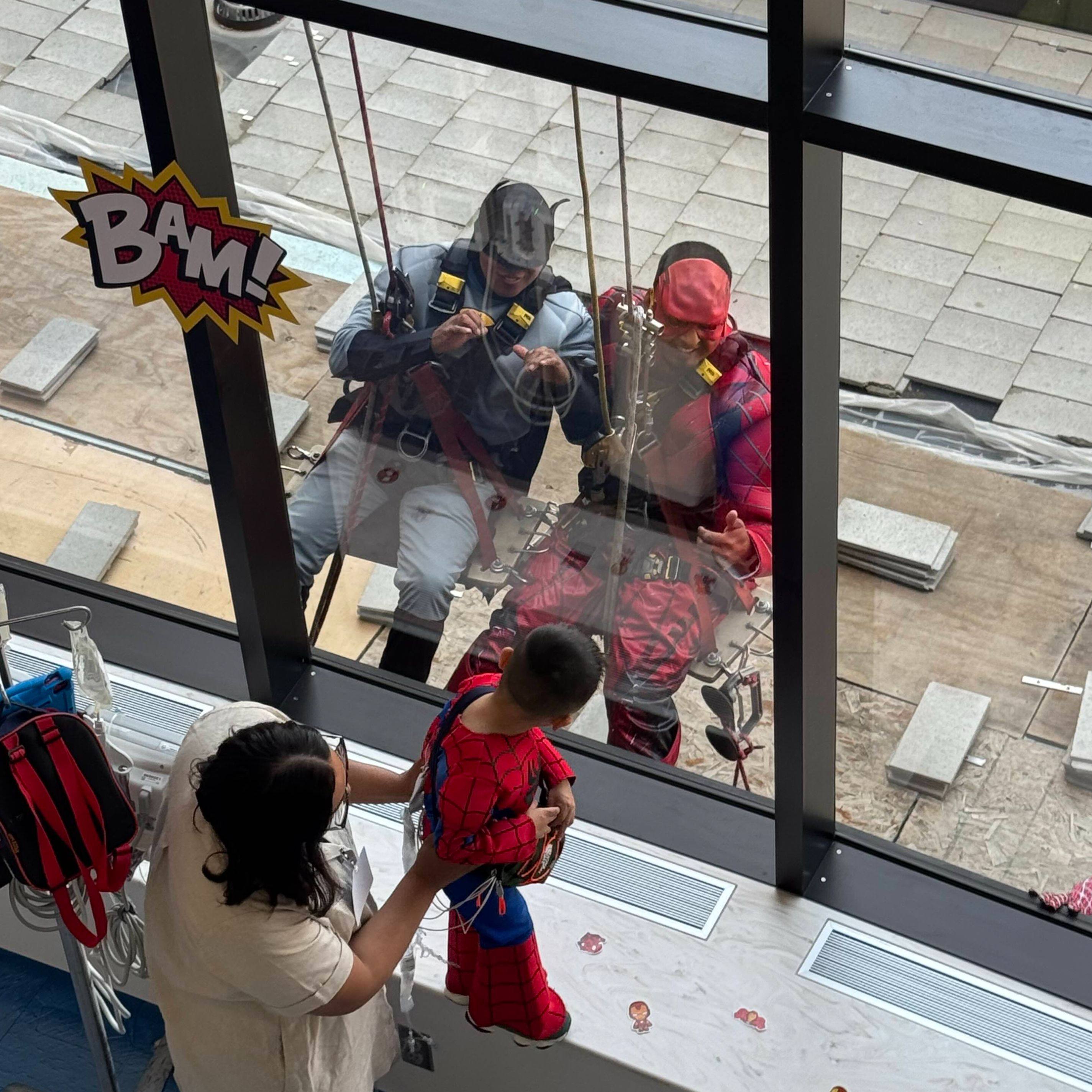
Before Kael Jaeger was born, his 20-week ultrasound revealed to his parents, Jacy and Jesse Jaeger, that he had a cleft lip and palate. As the couple adjusted to this new reality, his care team stepped up and created a plan for repairing this common birth defect.
A cleft lip and palate are openings or splits in the upper lip and roof of the mouth that don't close as an unborn baby develops. While usually isolated abnormalities, they can be associated with many inherited genetic conditions or syndromes. In addition to appearance, they also affect how a baby eats and swallows.
"Once they discovered the cleft lip and palate, his care team began checking him for other conditions. It turned out to be a very busy pregnancy," Jacy says. "We were thankful we knew ahead of his birth so it wasn't a shock, and when he was born, we could just focus on him."
The first concern when Kael was born was feeding. As Jacy says, he was a determined eater and took easily to a special bottle that is squeezed and doesn't require the baby to suck. Next up was plastic surgery to repair the split in his lip.
Then at about 10 months, Kael had the first surgery to create a palate using a flap of his own skin. At first, it looked like it was healing well, but about a week later, Jacy noticed some holes developing, and the repair appeared to be pulling apart rather than growing together. She took photos and sent them to Shelagh Cofer, M.D., Kael's surgeon and otolaryngologist at Mayo Clinic in Rochester, Minnesota.
Dr. Cofer suggested they try hyperbaric oxygen treatment. During this therapy, the patient breathes 100% oxygen at twice the atmospheric pressure. Under these conditions, their lungs gather additional oxygen, which helps fight bacteria and stimulates the release of substances that promote healing. It's been used to treat conditions including serious infections, carbon monoxide poisoning, sudden-onset hearing loss, radiation or diabetic wounds and decompression sickness due to scuba diving.
Because Kael was so young, he and Jacy would be in the hyperbaric chamber together. Their initial treatments were at Mayo Clinic under the care of Gary Toups, M.D., head of Mayo's Environmental Hyperbaric Medicine. Then, because it was closer to their home in Hollandale, Minnesota, the Jaegers transferred to Mayo Clinic Health System in Albert Lea, Minnesota, where Michael Ulrich, M.D., site director for Hyperbaric Medicine, supervised Kael's remaining treatments.
The hyperbaric chamber at Albert Lea can accommodate one person, or in this case, mother and baby. The patients lie on a table that slides into the clear plastic chamber. Then the oxygen and pressure are adjusted to simulate being 33 feet deep in saltwater. Each treatment is about 90 minutes. For five minutes at the halfway point, the pressurized oxygen is exchanged for regular room air to prevent oxygen toxicity. Altogether, Kael and Jacy had 10 treatments, which stretched over two weeks.
To prepare for the treatment, mother and son underwent a general health check to make sure they didn't have any underlying conditions. Both also washed all over as no makeup, lotions, deodorant or hair products were allowed. Jacy wore a gown, and Kael was in a diaper.
So how did they spend the time? Jacy brought DVDs, such as "Finding Nemo," to watch through the plastic tube. Since no toys were allowed, Kael was given a cup with a snap-on lid to keep him occupied. But mostly, they just hung out together.
"It was so worth it in the end. We didn't want Kael to have to go through another surgery to repair the hole. While we know he'll have more surgeries as he gets older, we're done for now," Jacy says. "In a way, I miss our time together in the hyperbaric chamber. We were literally trapped in a tube, so I had 90 minutes of distraction-free, one-on-one time with Kael. With work, family, caring for our 3-year-old daughter and other activities, that doesn't usually happen."
This story also appears on the Mayo Clinic Health System Hometown Health blog. You can find it there and share it with others https://www.mayoclinichealthsystem.org/hometown-health/patient-stories
Related Articles







